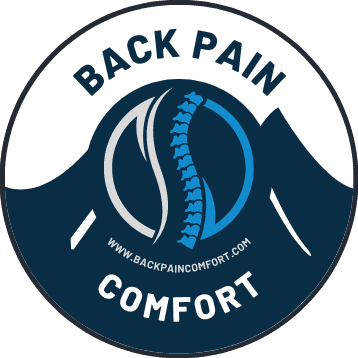
Imagine your lower back as a delicate yet crucial part of your body’s puzzle, holding many pieces together. When it’s healthy, you can move, bend, and shake without a worry. But when back pain strikes, each movement can feel like a challenge. It’s essential to know that some exercises, which are meant to keep us fit, can actually make lower back pain worse. In this article, we’ll dive into eight exercises that you might want to avoid if you’re experiencing lower back discomfort. Our goal is to help you stay active while protecting your back from further pain.
Toe Touches
While it might seem like a good stretch, bending forward to touch your toes can be tough on your lower back. This motion puts a lot of pressure on the discs in your spine, especially if your back is already hurting. It’s like pressing down on a jelly donut – you don’t want the jelly to squirt out! Instead, try lying on your back and gently pulling one knee towards your chest. This provides a safer stretch for your lower back.
Sit-Ups
Many of us think sit-ups are great for our abs, but they can be not-so-great for our lower backs. When you do a sit-up, you’re curving your spine and adding stress to those sensitive back bones. It’s like bending a paperclip back and forth – eventually, it gets weak and breaks. A better alternative is doing planks. They strengthen your core without bending your spine.
Leg Lifts
Lifting both legs while lying on your back may seem like a good way to strengthen your core, but it can be hard on your lower back, especially if your abdominal muscles aren’t very strong. It’s like trying to lift a heavy box with just one hand! You can modify this exercise by keeping one foot on the ground while lifting the other leg, making it safer for your back.

Heavy Weightlifting
Lifting heavy weights above your head or off the ground can put a lot of stress on your lower back. It’s like putting too many books in a backpack – it pulls you down and strains your back. If you enjoy weightlifting, it’s important to use proper form and perhaps lessen the weight to avoid hurting your back.
High-Impact Cardio Exercises
Activities like running or jumping can jar your back, especially if you’re running on hard surfaces or jumping on a hard floor. It’s like repeatedly dropping a glass jar on a concrete floor – eventually, it might crack. Consider switching to lower-impact activities like walking, swimming, or using an elliptical machine, which are gentler on your back.
Full Squats
Deep or full squats can be a risky move for those with lower back pain. When you squat deeply, your lower back can tend to round and compress the spinal discs, similar to squeezing a water balloon. This compression can exacerbate back pain. If squats are part of your routine, consider modifying them to half squats, ensuring your back remains straight, and not dipping too low.

Double Leg Raises
Double leg raises, where both legs are lifted together while lying on your back, can create immense pressure on the lower spine. This is akin to using a thin stick to lift a heavy rock – it’s just too much strain. A safer alternative is to lift one leg at a time, keeping the other leg bent at the knee, or performing gentle leg slides while keeping one foot in contact with the ground.
Deadlifts
Deadlifts, especially with heavy weights, demand a lot from the lower back. Improper form or excessive weight can lead to a rounding of the back, which is like overloading a thin shelf with heavy books – it may lead to damage. For those with back pain, it’s advisable to either avoid deadlifts or perform them under the guidance of a professional, with lighter weights and impeccable form.
Conclusion
Dealing with lower back pain doesn’t mean you have to give up exercise. It’s about choosing the right exercises that keep you active and safe. Remember, your back is like the foundation of a house – it supports everything else. So, it’s crucial to treat it with care. Listen to your body, and if an exercise feels wrong, don’t push through the pain. It’s always a good idea to consult with a healthcare professional or a physical therapist for personalized advice. By being mindful of the exercises you choose, you can help your back heal and prevent future pain. Let’s keep moving smartly and safely!






